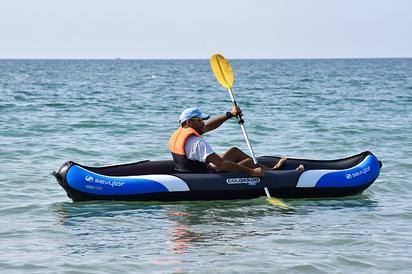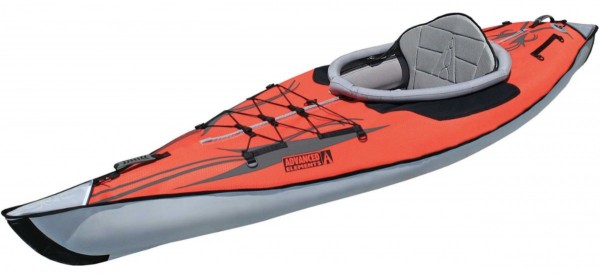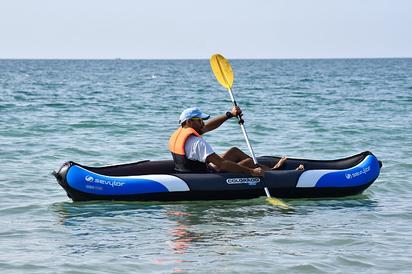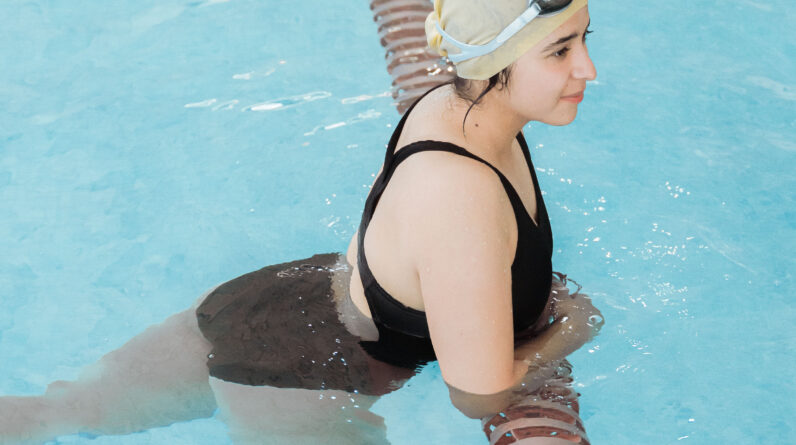
So, you’re interested in inflatable kayaks and you’re wondering just how durable they are, huh? Well, you’ve come to the right place! In this article, we’ll be diving into the topic of the durability of inflatable kayaks and exploring whether they can withstand the various elements and adventures you might encounter on the water.
But we won’t leave you hanging with just that! We’ll be sharing some valuable insights on what makes inflatable kayaks durable, including the materials they are made of and the construction techniques used. We’ll also discuss the different factors that can affect their durability, such as the type of water conditions you’ll be paddling in and how well you take care of your kayak. So, get ready to learn all about the durability of inflatable kayaks and make an informed decision on whether they’re the right choice for your next adventure!
Introduction
Inflatable kayaks have gained immense popularity in recent years, providing a convenient and versatile option for outdoor enthusiasts. These innovative water vessels offer a unique and thrilling way to explore rivers, lakes, and even the open sea. One common question that arises among potential buyers is the durability of inflatable kayaks. How well do they hold up against wear and tear? Can they withstand the rigors of rough waters and extended use? In this article, we will explore the factors that affect the durability of inflatable kayaks, as well as tips and insights to help you make an informed decision.
Definition of Inflatable Kayaks
Before diving into the durability aspect, it is important to understand what inflatable kayaks are. Inflatable kayaks are watercraft that can be inflated and deflated, providing easy transportation and storage options. These kayaks are typically made from durable materials, such as PVC or Hypalon, which are known for their strength and resistance to tears and punctures.
Materials Used in Inflatable Kayaks
The choice of materials plays a significant role in determining the durability of inflatable kayaks. The most commonly used materials include PVC (Polyvinyl Chloride) and Hypalon (Chlorosulfonated Polyethylene). Both materials offer excellent resistance to abrasion, punctures, and UV damage. PVC is more affordable and readily available, while Hypalon is known for its superior longevity and resistance to extreme weather conditions.
Advantages of Inflatable Kayaks
One of the key advantages of inflatable kayaks is their durability. These kayaks are designed to withstand a wide range of conditions, including rough waters, rocks, and even minor collisions. Inflatable kayaks can bounce off obstacles without sustaining significant damage, thanks to the flexible and robust materials used in their construction. Additionally, the ability to quickly deflate and pack them away reduces the risk of damage during transportation.
Disadvantages of Inflatable Kayaks
While inflatable kayaks offer numerous benefits, there are some drawbacks to consider. One of the main concerns is the potential for punctures or leaks. Although modern inflatable kayaks are designed with multiple air chambers to prevent total deflation in case of a puncture, there is still a risk of minor leaks. However, with proper care and maintenance, the likelihood of such issues can be minimized.

Factors Affecting Durability
Several factors influence the durability of inflatable kayaks. Understanding these factors can help you make an informed decision when choosing the right kayak for your needs.
Quality of Materials
The quality of the materials used is crucial in determining the durability of inflatable kayaks. High-quality PVC or Hypalon ensure superior resistance to abrasion, punctures, and UV damage. It is essential to choose a kayak from a reputable manufacturer that uses top-grade materials to ensure long-lasting performance.
Craftsmanship and Construction
The craftsmanship and construction of inflatable kayaks also play a significant role in their durability. Well-constructed kayaks feature reinforced seams, multiple air chambers, and sturdy valves. These design elements enhance the kayak’s strength and reduce the risk of leaks or tears. It is important to carefully examine the build quality of the kayak before making a purchase.
Proper Care and Maintenance
Proper care and maintenance are vital in extending the lifespan of inflatable kayaks. Regular cleaning, drying, and storing the kayak in a cool, dry place can prevent mold, mildew, and degradation of the material. Additionally, avoiding exposure to direct sunlight for extended periods and using protective covers can further enhance the durability of your inflatable kayak.
Testing and Certifications
To assess the durability of inflatable kayaks, they are subjected to rigorous testing methods and certifications.
Industry Standards for Durability
The inflatable kayak industry follows various industry standards to ensure the durability of their products. These standards outline specific requirements for materials, construction, and performance. By adhering to these standards, manufacturers can guarantee that their kayaks meet certain quality criteria.
Inflatable Kayaks Testing Methods
In order to determine the durability and performance of inflatable kayaks, manufacturers conduct various testing methods. These include pressure testing to assess the kayak’s ability to withstand high air pressure, puncture resistance testing to evaluate the material’s resistance to punctures, and stress testing to simulate real-world conditions of use.
Certifications for Kayak Durability
Certain certifications, such as ISO 6185 certification, are awarded to inflatable kayaks that meet specific durability and safety standards. These certifications provide reassurance to buyers that the kayak they are purchasing has undergone rigorous testing and meets international quality standards.

Protection Against Wear and Tear
To enhance the durability of inflatable kayaks, they are designed with various protective features.
UV Protection
Exposure to the sun’s harmful UV rays can weaken and degrade the materials of inflatable kayaks over time. To counteract this, manufacturers often include UV protection coatings or treatments on their kayaks. These coatings prevent the material from fading, cracking, or deteriorating due to UV exposure, resulting in increased durability and longevity.
Abrasion Resistance
Inflatable kayaks are designed to navigate through various water conditions, including rocky and abrasive surfaces. To protect against abrasion, manufacturers may incorporate reinforced bottoms or add extra layers of material in high-wear areas. These features enhance the kayak’s durability and reduce the risk of punctures or tears.
Impact Resistance
Inflatable kayaks may encounter collisions with rocks, branches, or other obstacles while on the water. Manufacturers address this concern by designing kayaks with impact-resistant features. These features absorb and distribute the impact force, minimizing the risk of damage to the kayak and ensuring long-lasting durability.
Repairing Damages
Despite their durability, inflatable kayaks may occasionally sustain damages. However, most damages can be easily repaired with the right techniques and tools.
Common Damages in Inflatable Kayaks
The most common damages in inflatable kayaks include punctures, leaks, and small tears. These damages can occur due to sharp objects, friction against rocks, or accidental mishandling. However, the majority of these damages can be repaired at home with proper knowledge and equipment.
Repair Techniques and Tools
Repairing damages in inflatable kayaks typically involves using repair kits, which often include adhesive patches, solvent, and instructions. The damaged area should be thoroughly cleaned and dried before applying the patch. Following the repair kit’s instructions carefully will ensure a proper and durable repair.
Preventive Measures for Avoiding Damages
To minimize the risk of damages, it is important to take preventive measures while using inflatable kayaks. This includes avoiding sharp objects or abrasive surfaces, practicing proper kayak handling techniques, and being cautious of potential hazards in the water. By being proactive and vigilant, you can significantly reduce the likelihood of damages and prolong the life of your inflatable kayak.

Longevity and Lifespan
The expected lifespan of inflatable kayaks can vary depending on various factors.
Expected Lifespan of Inflatable Kayaks
On average, inflatable kayaks can last anywhere from five to ten years with proper care and maintenance. However, it is important to note that frequent use, exposure to harsh conditions, and neglecting proper care can significantly reduce the kayak’s lifespan.
Factors Influencing Longevity
Several factors influence the longevity of inflatable kayaks. These include the quality of materials, frequency of use, exposure to UV rays, and the level of care and maintenance. By investing in a high-quality kayak, using it responsibly, and maintaining it regularly, you can maximize its lifespan.
Tips for Prolonging Lifespan
To prolong the lifespan of your inflatable kayak, follow these helpful tips:
- Rinse the kayak with fresh water after each use to remove saltwater or debris.
- Store the kayak in a cool, dry place away from direct sunlight.
- Avoid dragging the kayak on rough surfaces or sharp objects.
- Use a protective cover when transporting the kayak to prevent potential damages.
- Regularly inspect the kayak for any signs of wear, tear, or damage and address them promptly.
User Reviews and Feedback
To gain further insights into the durability of inflatable kayaks, let’s explore some user reviews and feedback.
Case Studies of Inflatable Kayak Durability
Many users have shared their positive experiences with inflatable kayaks, praising their durability in demanding scenarios. They have reported navigating through rapids, rocky shores, and even whitewater adventures without any significant damages. These user testimonies reflect the ability of inflatable kayaks to withstand rigorous conditions.
Common Customer Complaints
While most users are satisfied with the durability of inflatable kayaks, there are some common complaints. These include minor leaks or air loss over time, issues with valve quality, and problems with patch adhesion. However, it is important to note that these complaints are relatively rare and can often be resolved through proper care, maintenance, or warranty claim.
Positive User Experiences
On the flip side, many users have shared their positive experiences with inflatable kayaks, emphasizing their durability and long-lasting performance. These users appreciate the portability, ease of storage, and the ability to explore various water bodies without worrying about transportation limitations. Overall, the feedback from users indicates that inflatable kayaks can provide excellent durability and a fantastic paddling experience.

Comparisons with Traditional Kayaks
To better understand the durability of inflatable kayaks, let’s compare them to traditional hard-shelled kayaks.
Durability Compared to Hard-Shelled Kayaks
In terms of durability, inflatable kayaks can hold their own against hard-shelled kayaks. While hard-shelled kayaks are inherently more rigid and resistant to punctures, inflatable kayaks are designed to withstand similar conditions with the added advantage of flexibility. Inflatable kayaks can absorb impacts and bounce off obstacles, reducing the risk of damage. Furthermore, the durable materials used in inflatable kayaks offer excellent resistance to wear and tear.
Advantages and Disadvantages of Inflatable Kayaks
Inflatable kayaks offer several advantages over traditional hard-shelled kayaks. They are lightweight, portable, and easy to store. Inflatable kayaks are also suitable for beginners, as they provide stability and maneuverability. Additionally, they are more affordable and versatile, allowing for easy exploration of various water bodies. However, it is important to note that inflatable kayaks may require more time and effort to set up and inflate compared to hard-shelled kayaks.
Conclusion
In conclusion, inflatable kayaks are indeed durable and can withstand a wide range of conditions. By choosing a high-quality kayak, practicing proper care and maintenance, and adopting preventive measures, you can ensure the longevity of your inflatable kayak. The materials used, craftsmanship, and protective features play a crucial role in the durability of inflatable kayaks. When compared to traditional hard-shelled kayaks, inflatable kayaks offer numerous advantages while maintaining a similar level of durability. So, if you are looking for a reliable and durable watercraft to embark on your adventures, an inflatable kayak is a fantastic option. Happy paddling!








